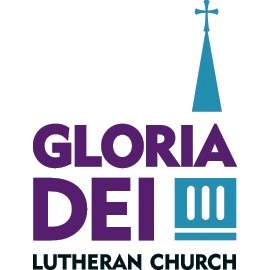 When Earth was created, God entrusted us as its stewards and calls us to care for it and each other in all our actions. When we make environmentally-wise choices we are celebrating and respecting creation, giving thanks for Earth’s abundant resources, and being good stewards with what we’re given. Genesis 2:15 tells us, ”The Lord placed the man in the Garden of Eden to tend and watch over it.” Our very first call from God was to tend the garden. Other than taking care of each other, there is no more important thing we can do than tend the garden, our Earth, as it was divinely and perfectly created by God. The Garden of Eden is not a faraway place in distant history – it is reflected in the environment all around us and even in your own backyard.
When Earth was created, God entrusted us as its stewards and calls us to care for it and each other in all our actions. When we make environmentally-wise choices we are celebrating and respecting creation, giving thanks for Earth’s abundant resources, and being good stewards with what we’re given. Genesis 2:15 tells us, ”The Lord placed the man in the Garden of Eden to tend and watch over it.” Our very first call from God was to tend the garden. Other than taking care of each other, there is no more important thing we can do than tend the garden, our Earth, as it was divinely and perfectly created by God. The Garden of Eden is not a faraway place in distant history – it is reflected in the environment all around us and even in your own backyard.
Ever since the last glacier receded from this land the plants, animals, insects, and even bacteria in the soil and water have been forming symbiotic relationships – meaning they have evolved together and depend on each other for life. Plants capture energy from the sun and nutrients from soil and turn it into food for insects and other animals. Larger animals, in turn, eat the smaller animals, in a seasonal, self-sustaining system. When we bring non-native plants and animals into an ecosystem, it can disrupt the crucial balance that all life living there depends on.
According to Science Magazine, since the 1970s North America has lost over 3 billion birds, nearly 30% of the total. Some causes are habitat loss and ecosystem demise. There has been a 53% loss (700 million adults) of grassland birds in that same time period. Bees are experiencing a similar fate. Millions of bees are dying due to loss of habitat, pesticides (neonicotinoids), and parasites (the varroa mite). The garden is suffering and needs our tending.
Today, I can:
– Volunteer with a county park or an environmental protection group (Friends of the Mississippi River or Great River Greening are great resources, as well as Three Rivers Park District) in restoration efforts—removing invasive plants and participating in native plant planting events.
– Learn about sustaining wildlife with native plants in my yard with books like Bringing Nature Home or Nature’s Best Hope by Douglas Tallamy, or Pollinators of Native Plants or Bees by Heather Holm.
– Help birds by providing water, food, and cover.
In the future, I plan to:
– Plant native plants in my yard. Some examples include:
Trees: Oaks, especially white or bur oaks, river birch, ironwood
Shrubs: prairie willow, American hazelnut, gray dogwood
Perennials: milkweed, purple coneflower, meadow blazing star, stiff goldenrod, bee balm, Joe pye weed
Grasses: little bluestem, prairie dropseed, Pennsylvania sedge
– Clean plant debris from my yard in the spring. Hollow plant stems and leaf litter provide shelter for insects and their larvae. Plant debris also provides birds with material for their nests in the spring.
– Install a rain garden to capture precious precipitation and help it soak into the ground rather than run off into storm sewers.
Source: Interfaith Creation Care of the South Metro is an organization of volunteers representing 15 faith communities in the South Metro. We collaborate to create content like this and to bring Creation-focused events and resources to all faith communities in the area.

